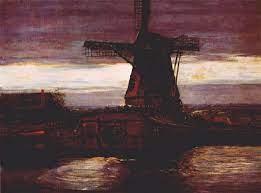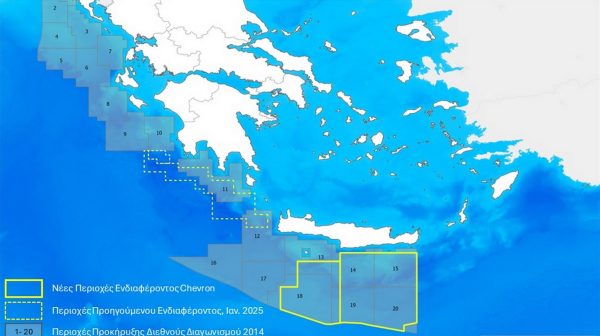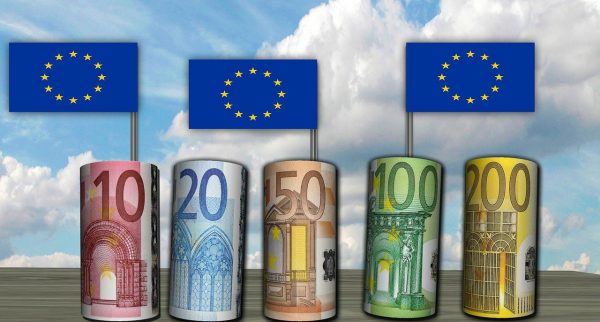
A significant success for the Greek Police was the solving of the case of the so-called robbery of the century, the theft of the three paintings of the National Gallery that had disappeared in the early hours of January 9, 2012, in a case – a mystery with a cinematic plot.
Authorities have been able to track down the artwork and the perpetrator, following step by step the information they have been collecting for almost a decade. Having their eyes and ears on legal as well as illegal auctions taking place in various parts of the world, the specially trained officers of the Attica Security Directorate spread their nets everywhere, even searching private collections.
How the police acted
In recent months, the Greek Police, together with National Intelligence Agency EYP, launched an effort to rekindle the search to find both Picasso’s painting and the other two works – “Stammer Windmill” (1905) from the first period of the Dutch painter Piet Mondrian and a religious depiction by Italian Guillermo Katsia, stolen by the perpetrators in 2012. The aim was to locate the works and return them to the now renovated National Gallery. Investigators were intrigued by the fact that one of the perpetrators who entered the National Gallery opened the balcony door lock without breaking it.
So, either he had a key that someone supplied him with, or he was a “scientist” in unlocking locks, and this is an element that might photograph his identity. Having this element in mind, but also the figure of the perpetrator – tall, slender, relatively young, with masterful movements and experience in night raids – they began to investigate which foreigners with such characteristics were released in the last half of 2011 from Greek penitentiaries. It is worth noting that the links of the Greek and foreign authorities in the field of art collectors, but also of the people who distribute and trade them, claim that this particular Picasso does not exist in any collector’s collection in the world. Therefore they said that it was stolen and hidden in a warehouse in Greece.
Who is the perpetrator?
But who is the man who fell into the hands of the authorities? This is a 49-year-old Greek man who had been involved in robbery in the past and who does not seem to have anything to do with the field of art. He spends his days in Porto Rafti and abroad, he confessed that he was hiding behind the big burglary of the works of Picasso and Mondrian, from the National Gallery.
The perpetrator confessed that he stole the works of art, obviously ignoring that they belong to the State and therefore they could never change owner. So, no matter how many times he tried to push them throughunderground channels, he could not find a buyer as no one would give millions to buy paintings that would never actually be his. He could not show them anywhere and if they were ever found, the masterpieces would be returned to the State and the owners would be punished.
The accused first hid the paintings in a warehouse in Keratea and then in a ravine so as not to be found in his possession. Early reports say he never managed to get them abroad to sell them on the black market. The painting by Picasso of the “Female Head” stolen from the National Gallery was a gift of the great painter to the Greek people for their resistance against the forces of fascism. This is, therefore, a work of incalculable symbolic value for Greece. 
The chronicle of the “robbery of the century”
It was early in the morning of January 9, 2012, when unknown perpetrators managed to deactivate the alarm of the National Gallery building, at 50 Vassileos Konstantinou Avenue, break a balcony door and enter the interior of the exhibition.
The two robbers broke into the room where Picasso’s painting was located and completed the theft in a few seconds.
The hooded man who undertook to take the painting, with a knife cut it out of the frame. His accomplice blocked the alarm and stayed behind. When the guard ran to the scene of the theft it was already too late…
The strangers managed to remove:
A painting, oil on canvas, dimensions 56 by 40, by the Spanish painter Pablo Picasso, painted in 1939 and depicting a female head. At the back of the painting there is a handwritten dedication of the Spanish painter, which states: “Pour le Peuple Grec, Hommage de Picasso” (For the Greek people, Tribute from Picasso).
They also took a painting, oil on canvas, measuring 35 by 44 cm. It was the painting by the Dutch painter Piet Mondrian, which was made in 1905 and depicts a windmill along a river.

Stammer Windmill by Mondrian
This work was purchased in 1963 by Alexandros Pappas and was donated to the National Gallery.
Finally, a work on paper, using pen with diluted sepia, dimensions 27 by 16.8cm by the Italian Guglielmo Caccia (Moncalvo) depicting Saint Diego de Alcala in ecstasy.
Latest News

Cost of Living: Why Greece’s 3% Inflation Is Raising Alarm
Greece appears to be in a more difficult position when it comes to price hikes, just as we enter the era of Trump’s tariffs.

Fitch Ratings Upgrades the Four Greek Systemic Banks
NBG’s upgrade reflects the bank’s ongoing improvements in its credit profile, Fitch notes in its report, including strong profitability, a reduction in non-performing exposures (NPEs), and lower credit losses

Trump to Announce Sweeping New Tariffs Wednesday, Global Retaliation Expected
With Trump's announcement just hours away, markets, businesses, and foreign governments are bracing for the fallout of one of the most aggressive shifts in U.S. trade policy in decades.

Inflation in Greece at 3.1% in March, Eurostat Reports
Average inflation in the eurozone settled at 2.2%, compared to 2.3% in February

Greece’s Unemployment Rate Drops to 8.6% in February
Despite the overall decline, unemployment remains higher among women and young people.

Jerry Kalogiratos Highlights Key Role of Energy Transition and Data Demand in LNG Outlook
Energy transition and the prospects of LNG were discussed at Capital Link’s 19th Annual International Maritime Forum, during a panel discussion with Jerry Kalogiratos (Capital Clean Energy Carriers Corp.)

Santorini Safe and Ready for a Dynamic Tourism Season
Authenticity, cultural heritage, and genuine experiences at the center of Santorini's new promotional campaign

Electricity Bills: Greece Announces Reduced Tariffs Schedule
Greece will now offer lower electricity rates between 11:00-15:00 and 02:00-04:00

Chevron Confirms Eyeing Natural Gas Exploration South of Crete
Chevron recently declared its intent to explore a third area, south of the Peloponnese.

Evangelos Marinakis: A time of change from which shipping can benefit
Speaking at the 19th Annual Capital Link International Shipping Forum Evangelos Marinakis stressed the challenges that shipping faces today












![Τουρκία: Μεγάλες βλέψεις για παραγωγή ηλεκτρικών οχημάτων [γράφημα]](https://www.ot.gr/wp-content/uploads/2025/03/ot_turkish_autos-90x90.png)











![ΕΛΣΤΑΤ: Αυξήθηκε η οικοδομική δραστηριότητα κατά 15,6% το Δεκέμβριο [πίνακες]](https://www.ot.gr/wp-content/uploads/2025/03/DSC9655-2-1024x569-1-90x90.jpg)

















 Αριθμός Πιστοποίησης
Αριθμός Πιστοποίησης